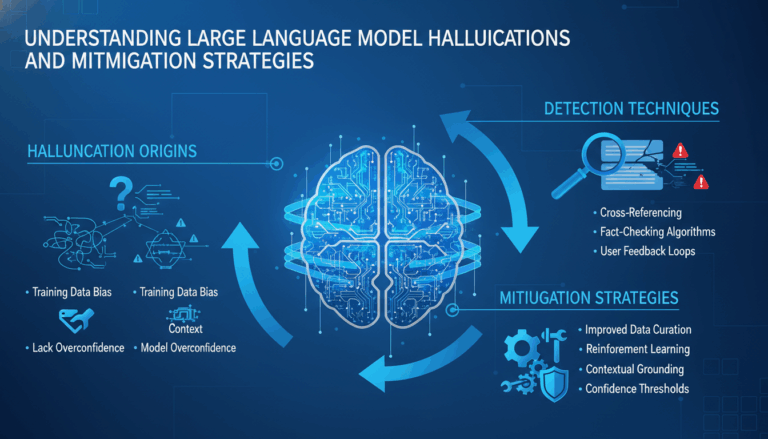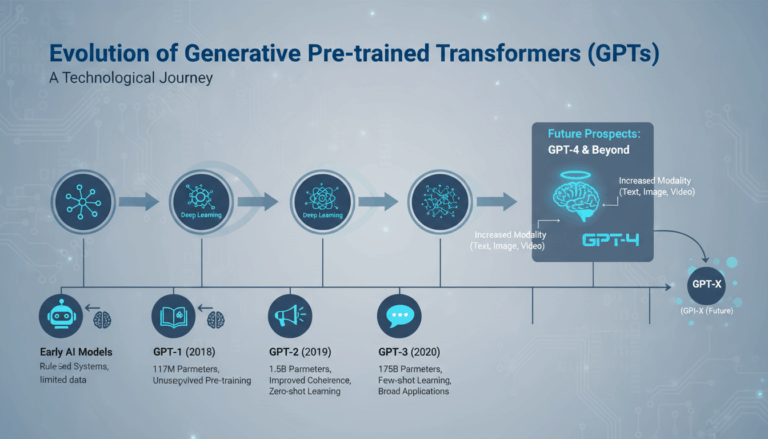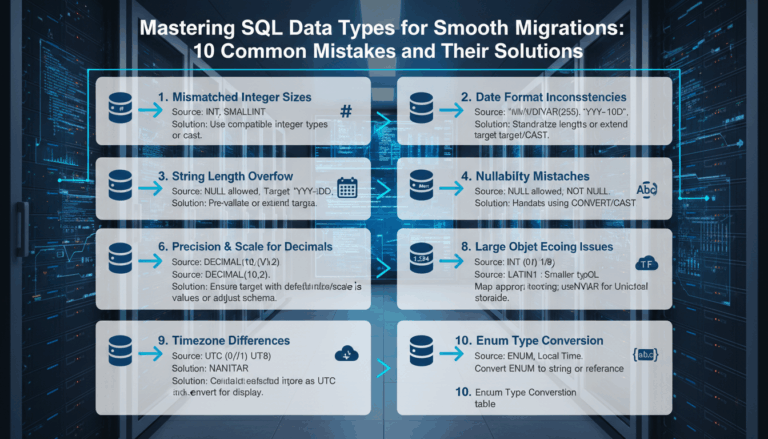Understanding AI Pilot Projects and Their Importance
In the rapidly evolving landscape of artificial intelligence (AI), pilot projects serve as a critical stepping stone for organizations aiming to harness AI technologies effectively. These pilot projects are essentially small-scale, preliminary studies conducted to evaluate the feasibility, duration, cost, and potential impact of AI integration into existing processes. By focusing on controlled environments, they offer valuable insights and a roadmap for scaling AI across various functions.
The primary importance of AI pilot projects lies in their ability to mitigate risks associated with large-scale AI deployments. Organizations often face significant challenges, including technological integration issues, data management complexities, and uncertainty in ROI. Pilot projects offer a low-risk platform to identify and address these issues early on. Through structured testing within a pilot framework, businesses can assess both technological and operational compatibility with minimal disruption to existing workflows.
Consider a company in the retail sector aiming to implement AI-driven inventory management. By initiating a pilot project, they can introduce AI algorithms to manage inventory in a limited number of stores. This approach allows them to collect data on how the AI impacts inventory turnover rates, stock shortages, and customer satisfaction, without the pressure of a full-scale rollout. The insights gained can then inform strategic adjustments before expanding the solution across the entire network.
AI pilot projects also facilitate valuable training opportunities and knowledge acquisition. As businesses explore how AI applications function in real-world settings, they create learning experiences for their teams. Employees get hands-on experience with AI tools, enabling smoother transitions when these technologies are scaled up across the organization. This democratization of AI knowledge helps in building a more adaptable workforce, ready to leverage AI innovations effectively.
Moreover, pilot projects play a crucial role in stakeholder engagement and buy-in. Demonstrating tangible benefits and improvements through pilots can help gain support from key stakeholders who might be skeptical of AI investments. A pilot serves as evidence of AI’s potential impact, making it easier to justify resource allocation and strategic focus on larger AI initiatives.
To ensure a successful AI pilot, it’s important to define clear goals and metrics from the outset. Objectives should align with broader business priorities and be measurable to accurately assess the project’s performance. It might involve setting key performance indicators (KPIs) such as error reduction rates, processing speed improvements, or enhanced customer interactions. Regularly reviewing these metrics ensures the project remains aligned with its aims and can adapt to unforeseen challenges.
Through well-designed AI pilot projects, organizations not only validate AI concepts but also build confidence around AI capabilities. This foundational work catalyzes subsequent phases of AI strategy, driving organizational growth and competitive advantage in a technology-driven marketplace. Ultimately, successful pilot projects form the backbone of robust AI integration, paving the way to unlocking meaningful and sustainable return on investment.
Identifying Key Challenges in AI Pilot Implementations
When embarking on AI pilot implementations, organizations often encounter several multifaceted challenges that can hinder the successful deployment and scale-up of AI technologies. Recognizing and addressing these challenges is crucial to ensure the smooth transition from pilot to full-scale operation.
One of the primary challenges is the lack of a clear problem definition. AI endeavors often falter due to ill-defined objectives, where the problem the AI is supposed to solve isn’t clearly articulated. To address this, organizations should invest time in carefully scoping projects, identifying specific business problems, and aligning them with strategic priorities. This involves collaboration across various departments to ensure a comprehensive understanding of the business needs combined with technical feasibility.
Data-related challenges are also significant hurdles in AI pilot projects. Poor data quality, insufficient data volume, and fragmented data silos can severely undermine the effectiveness of AI models. Organizations must ensure that their data is clean, well-organized, and comprehensive. A robust data strategy involves establishing data governance frameworks, investing in data integration tools, and possibly using synthetic data to fill in gaps. Additionally, dealing with data privacy and compliance, such as GDPR obligations, adds another layer of complexity, requiring careful planning and implementation of ethical data handling practices.
Technological integration issues frequently arise, particularly when AI solutions need to dovetail seamlessly with existing legacy systems. The challenge often lies in the complexity of integrating new AI tools with outdated or non-compatible systems, which can require significant customization and adaptation. To mitigate these risks, organizations should consider using middleware solutions or API-driven architectures that facilitate smoother integration. Piloting AI in a sandbox environment allows businesses to experiment without disrupting existing operations, testing for integration issues in a controlled manner.
The talent gap in the AI field is another critical challenge, as skilled professionals proficient in AI and machine learning are in high demand but short supply. This scarcity can delay or derail AI pilot initiatives. Organizations should therefore prioritize talent development through strategic hiring and upskilling programs. Collaboration with universities and investing in training for existing staff can help cultivate the necessary skills in-house, reducing reliance on external talent.
Expectation management is crucial, as there is often a significant discrepancy between stakeholder expectations and the actual performance of AI solutions. Unrealistic expectations can stem from a lack of understanding of AI limitations and promise of AI-driven results. Clear communication about what AI can realistically achieve and setting achievable project milestones can help align expectations with reality.
Finally, obtaining stakeholder buy-in is essential but frequently challenging. Pilots must demonstrate tangible and measurable value to gain the support required for broader implementation. This is where building a strong business case, underpinned by data-driven insights and demonstrated outcomes from the pilot, becomes imperative. Involving stakeholders early in the process and maintaining transparent communication throughout the project can help in securing necessary support and resources.
Addressing these challenges involves a combination of strategic planning, cross-functional collaboration, and a commitment to continuous learning and adaptation. By proactively tackling these issues, organizations can significantly enhance the success rate of AI pilot projects, setting the stage for successful AI integration and a substantial return on investment.
Strategies for Designing Effective AI Pilot Projects
Developing an effective AI pilot project requires a strategic approach that blends clear objective setting, robust data management, and iterative learning processes. Here’s how organizations can design impactful AI pilot projects that serve as a foundation for broader AI adoption.
First, it’s crucial to define clear objectives and scope. The success of a pilot hinges on precisely articulated goals. Start by identifying specific pain points or business opportunities that AI might address. Engage stakeholders from different departments to understand their perspectives and align the pilot’s objectives with broader business aims. For instance, if an organization seeks to improve customer service efficiency, the pilot could focus on automating routine inquiries using AI chatbots. Clearly defining expected outcomes—like reduced resolution time or enhanced customer satisfaction—helps keep the project focused and measurable.
Assemble a multidisciplinary team that includes data scientists, domain experts, and IT professionals. Effective collaboration between these groups ensures that the pilot incorporates technical insights and practical business knowledge. This team should be empowered to make decisions and adapt to emerging insights during the pilot. Regular workshops and collaborative tools can facilitate continuous communication and problem-solving among team members.
Next, concentrate on data preparedness and management. High-quality, relevant data is the backbone of any AI initiative. Begin by conducting a thorough data audit to understand the available data landscape and identify gaps. Implement data cleaning procedures to ensure accuracy and completeness. If data is siloed across different systems, develop strategies for integration, possibly utilizing ETL (Extract, Transform, Load) processes to streamline data flow into the AI models. Moreover, ensure compliance with all data privacy regulations, establishing clear governance frameworks.
Pilot in a controlled environment. Before deploying AI solutions on a broad scale, test them in a controlled, sandbox environment that simulates real-world conditions without risking business operations. This stage allows for experimentation with minimal impact on the company’s daily functions. By carefully monitoring the pilot, the team can identify unexpected challenges and iterate rapidly on AI models.
Incorporate a feedback loop mechanism for iterative learning. Implement systems for continuous data collection and analysis to monitor the AI’s performance against predefined metrics. Conduct regular reviews to assess if the AI is meeting its objectives and where adjustments might be necessary. This iterative approach allows improvements to be made based on tangible insights rather than assumptions.
Establish clear milestones and success criteria. Define what constitutes success for the pilot and establish key performance indicators (KPIs) to measure progress. Success criteria might include metrics like improved process efficiencies, cost savings, or enhanced user engagement. A phased approach, where success in smaller objectives incrementally leads to achieving broader goals, can be highly effective.
Furthermore, foster stakeholder engagement and transparency throughout the project. Regularly update stakeholders on progress and findings, using dashboards or presentations that highlight accomplishments and lessons learned. This transparency helps garner support and secures buy-in from senior leaders, facilitating the transition from pilot to production.
Finally, be prepared to scale based on learnings. Once the pilot demonstrates value and reliability, develop a strategic roadmap for scaling AI solutions more broadly. This involves planning for increased infrastructure capability, expanded training for additional team members, and possibly reevaluating business processes to accommodate widespread AI integration.
By following these strategies, organizations can set the stage for successful AI pilot projects that not only validate capabilities but also build momentum for further AI integration across the enterprise.
Measuring Success: Evaluating ROI in AI Pilots
To effectively measure the success of AI pilots, understanding and evaluating the return on investment (ROI) is crucial. ROI assessment for AI projects involves determining the balance between the costs incurred and the benefits realized. Here, we’ll delve into methodologies and strategies to evaluate ROI effectively.
To begin with, it’s essential to have clear metrics and KPIs that align with the AI pilot’s objectives. These might range from efficiency improvements, cost reductions, to enhanced customer satisfaction. For example, if a pilot aims to optimize supply chain operations, KPIs could include reduced inventory holding costs, decreased lead times, and improved order accuracy. These metrics should be quantifiable and relevant to business goals.
Cost Analysis: The evaluation starts with a comprehensive understanding of costs, which include development, deployment, and operational expenses. This involves accounting for initial setup costs such as hardware, software, and personnel training. Additionally, ongoing maintenance and support costs must be facted in. A well-documented cost breakdown provides clarity on short-term versus long-term expenses, enabling more effective management and adjustment of resources.
Benefit Realization: On the benefit side, identify both tangible and intangible benefits. Tangible benefits might include increased revenue through enhanced product recommendations or reduced costs due to automation. Intangible benefits, often challenging to quantify, include improved customer experience, brand value, or employee satisfaction. Leveraging surveys and feedback mechanisms can help quantify these softer metrics.
Implement a balanced scorecard approach to view performance across different dimensions. This involves using financial and non-financial metrics to gauge the pilot’s success beyond traditional monetary gains. For instance, in a customer service AI pilot, alongside cost savings from reduced call handling time, the balanced scorecard might also track customer satisfaction scores and service response times.
Time-Bound Analysis: Evaluate ROI within specific timeframes to understand both short-term impact and long-term viability. Initially, the ROI might appear low due to upfront investments, but tracking over subsequent periods often reveals increasing returns as the AI model matures and efficiencies are realized. Therefore, it’s vital to have both immediate and sustained tracking mechanisms.
Scenario Planning: Incorporate scenario analysis by considering different outcomes based on variable conditions. This method helps anticipate potential challenges and adjust strategies accordingly. For example, simulate scenarios where data quality issues impact AI outcomes, evaluating how this might affect ROI and what mitigation strategies could be adopted.
Iterative Feedback Loops: Establish continuous feedback loops to reassess AI performance regularly. These should be built into project management processes to allow for dynamic adjustments in strategy. As data accumulates, use advanced analytics to refine models and improve predictive accuracy, thereby enhancing ROI.
Engage stakeholders regularly, presenting them with concise summaries and reports showcasing ROI achievements and future projections. Transparency in communication ensures stakeholders are aligned and supportive of the project’s evolution.
Finally, translate insights from ROI evaluations into strategic recommendations to fine-tune AI applications. By identifying which elements drive the highest returns, organizations can focus efforts on scaling these areas, achieving a holistic and sustainable increase in AI-driven productivity and value.
Through meticulous planning, a robust monitoring framework, and adaptive strategies, organizations can effectively evaluate and enhance the ROI of their AI pilot projects, ensuring these initiatives not only prove concept feasibility but also drive substantial business value.
Scaling Successful AI Pilots for Enterprise-Wide Impact
Scaling AI pilot projects to create an enterprise-wide impact is both a strategic and technical endeavor. The transition from a successful pilot to a broader implementation requires meticulous planning, resource allocation, and a robust change management strategy.
Begin by establishing an overarching AI strategy that aligns with the company’s long-term goals. This involves revisiting the initial objectives of the pilot project and ensuring they scale effectively to meet multiple departments’ needs across the organization. A unified vision from leadership ensures every team understands the value AI brings, facilitating organizational buy-in.
Secure executive support as a foundational component to scaling efforts. High-level sponsorship provides the necessary resources and fosters a culture conducive to adopting new technologies. Engaged leadership helps to overcome resistance and provides a steady direction, ensuring alignment across various layers of the organization.
Develop a scalable infrastructure capable of supporting increased demand brought on by full-scale AI deployment. This includes upgrading hardware and cloud services to handle larger datasets, more complex algorithms, and increased user access. Adopt cloud-based solutions or hybrid architectures capable of elastic scaling, providing the flexibility to adapt as AI use expands.
Emphasize strong governance frameworks to maintain consistency and quality across scaled implementations. Establishing robust governance involves setting clear protocols for data management, model validation, and ethical considerations. This framework should include guidelines for data privacy and security, ensuring compliance with regulations such as GDPR or CCPA. Regular audits and reviews maintain adherence to these protocols and help identify areas requiring improvement.
Integrate cross-functional teams to leverage diverse expertise and perspectives. Data scientists, business analysts, and IT professionals should collaborate to streamline AI models for various applications. Encouraging such interdisciplinary collaboration enhances innovation and ensures that the solutions remain relevant and impactful across different departments.
Implement iterative scaling practices, wherein expansion is conducted in phases. Begin with high-impact areas identified during the pilot phase, optimizing core functions before incrementally introducing AI to other parts of the business. This tactic manages risk effectively, allowing testing and iterative improvement within manageable segments of the organization.
Focus on upskilling to prepare the workforce for broader AI integration. Provide comprehensive training programs and resources to equip employees with necessary skills. Foster a culture of continuous learning and exploration of new AI advancements, nurturing talent internally and reducing reliance on external hiring.
Communicate successes and lessons learned throughout the scaling process. Document and share findings from the pilot phase that demonstrate the efficacy of AI solutions. Create detailed reports and dashboards to present metrics illustrating improvements in productivity, cost savings, or customer satisfaction. Transparent communication cultivates trust and encourages further engagement from stakeholders across the organization.
Lastly, establish a feedback mechanism that incorporates insights from end-users. Collecting real-time feedback enables the organization to refine AI applications continuously, ensuring their solutions remain aligned with evolving business needs and user expectations. Adapting based on this feedback fosters a responsive AI system, capable of delivering substantial enterprise-wide benefits.
By strategically orchestrating these components, businesses are well-positioned to leverage the full potential of AI, transforming initial pilot success into comprehensive, enterprise-wide benefits.




